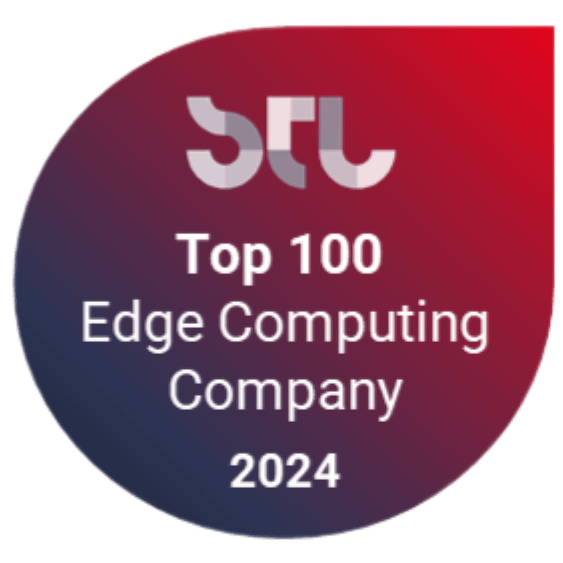What are the Top Open-Source Kubernetes Projects for Edge Computing?
Coredge Marketing
December 10, 2021

Kubernetes is paving the path of edge computing and helps in allowing organizations to effectively run containers (virtual machine as well as physical machine) on clusters to handle workloads. Some methodologies are used to use Kubernetes in edge-based architecture for managing workloads and other deployments. These methodologies include edge nodes (used for instances with low-capacity resources), KubeEdge (to make edge resource utilization optimized), and hierarchical cloud plus edge to make resource consumption flexible).
When defining the edge-computing architecture, the platform should be scalable and flexible enough for application deployment on it or in the data center. Using open-source technology along with the Kubernetes platform can truly harness the power and influence of edge computing. There are different open-source Kubernetes projects for edge computing.
Some of these open-source Kubernetes projects are given below:
(1)k3s:
k3s is an open-source Kubernetes project that helps in accelerating edge computing. k3s is a lightweight certified Kubernetes distro, which is developed for implementing and executing production operations. It supports 40 MB binary and 250 MB memory consumption. As default storage backend, k3s adds support for sqlite3. MySQL, Postgres, and Etcd3 are also supported.
Highlights about k3s:
- Supports fast deployment.
- Small size project (<100MB).
- Continuous integration is possible.
- Simple and secure.
- Flexible, reliable, and portable.
(2) KubeEdge:
KubeEdge is an open-source Kubernetes project that is used to extend capabilities of native containerized application orchestration to hosts at Edge. It is also known as a workload framework for edge computing.
Cloud and edge are two main components of KubeEdge.
A brief description is given below:
Cloud: On cloud, EdgeController & edge CloudHub exists. EdgeController helps in managing edge nodes and performing reconciliation among edge nodes. CloudHub works as a communication interface module and a caching mechanism for ensuring changes are sent to EdgeHub.
Edge: Edge nodes are found on the Edge part. It comprises of EdgeHub (communication interface module), MetaManager (check the persistence of node-level metadata), EventBus (used for handling internal edge communication), Device Twin (used for synchronizing devices between Edge & Cloud), and Edged (used for pod lifecycle management) too.
Highlights about KubeEdge:
- Extremely lightweight.
- Fully compliant Kubernetes distribution is supported.
- Reliable and scalable for edge computing.
(3) K0s:
K0s is a Kubernetes distribution featured with all essential features to develop a Kubernetes cluster and packaged as a single binary. Its features include Containerd, single static binary, control plane storage options (etcd, MySQL, SQLite, PostgreSQL), control plane isolation, and control plane for node communication. It is suitable for any cloud environment and also, useful in Edge and bare metal deployment due to its simple design.
Highlights about K0s:
- Reduce the complexity of installation and supports automatic lifecycle management with k0sctl.
- Bootstrap new Kube Clusters in minutes and it is easy to get started (no developer friction).
- Automate deployment and updates keeping control panel isolation as default.
- Optimize infrastructural resources.
- Single-node, multi-node, Docker, and airgap like installation methods are available.
(4) MicroK8s:
Microk8s is a minimalistic Kubernetes distribution that focuses on performance and simplicity. This helps in tracking upstream releases and making clustering trivial. DevOps team can build IoT-based applications for k8s and then, deploy these apps to MicroK8s on Linux boxes. It can automate the process of choosing the best nodes for data storage of Kubernetes. When one cluster database node disappears, another node is automatically promoted.Highlights about MicroK8s:
- Appropriate container record.
- Add hardware acceleration to machine learning workflows.
- Kubernetes deployment in a few seconds.
- Simplest production-grade upstream k8s.
- Single command installation on Windows, macOS, and Linux.
(5) EdgeXFoundry:
EdgeXFoundry is an open-source Kubernetes project that helps in collecting data from sensors at the Edge and then working as a dual transformation engine for data traveling (sending/receiving) from/to cloud, enterprise, and on-premise applications.Highlights about EdgeXFoundry:
- Storage facility to support remote/disconnected edge systems.
- Platform agnostic in terms of OS, hardware, distribution, protocol, and sensor.
- Facilitate intelligence moving closer to the edge.
(6) Baetyl:
Baetyl is the first open-source edge computing platform in China. This platform can extend data, cloud computing, and services seamlessly to edge devices. It provides access to any protocol with the help of different networks and also, allows apps to run on different devices. Through Containerization and Modularization mode, any application and service can be extended.To know more about such useful and reliable open-source Kubernetes projects, stay connected with us!





